| View previous topic :: View next topic |
| Author |
Message |
charmystic
Joined: 19 May 2009
Posts: 4
Location: Bucharest, Romania
|
 Posted: Tue May 19, 2009 9:53 pm Post subject: Voigtlander bayonet lenses on Nikon D40 Posted: Tue May 19, 2009 9:53 pm Post subject: Voigtlander bayonet lenses on Nikon D40 |
 |
|
charmystic wrote:
Hello and sorry for bothering you! After 2 days of intense googling,I decided I could ask you people a few questions, if you have the time and willingness to help me. I received two lenses a couple of days ago, they were a gift:
- Voigtlander Color Skoparex AR 2.8/28
- Voigtlander Color Ultron 1.8/50
I am a Nikon D40 user, therefore I cannot use these lenses, but I would really like to change that fact. Please tell me if the info I found about them on the Internet is correct:
- they are 2 pins Rollei Quick Bayonet Mount (QBM) - in my case
- The Ultron has a 49 mm filter and the Color Skoparex a 58 mm filter
I searched the net for a QBM-M42 adapter, so I could use a M42-DSLR adapter afterwards, in order to make them work on my D40 (I know that I would use them in manual mode and I won't be able to focus to infinity because I have a Nikon). My search didn't actually pay off, sadly, until I found a thread on your forum stating that it was indeed possible:
I found the Voigtlander Retina DKL Lens Adapter Ring for Nikon AI mount.
It's 138$ and I'm not sure if it is a good investment and if it will do the trick for me. I don't mind shooting in manual mode, I usually do this on my D40, although now I must see what's the deal with that stop down metering. Some people advised me to buy a Voigtlander film SLR, but the prices I saw seemed huge and I am just a student! 
I was wondering what to do. Could I still use them with something like this at least for macro shots? (I am into that kind of photography)
- 58-52 mm reversing ring?
- Nikon BR-2A 52mm reversing adapter?
- various step-down/step-up rings? (58-52, 52-49)
These would also be a lot cheaper - about a third of the price (and available in my country, also). Are they an ok solution for the moment, so that my lenses won't just stand on my shelf? Or is it just too complicated and I should forget the whole thing?
Thanks for your time! |
|
| Back to top |
|
 |
F16SUNSHINE


Joined: 20 Aug 2007
Posts: 5486
Location: Left Coast
Expire: 2011-11-18
|
 Posted: Tue May 19, 2009 10:44 pm Post subject: Posted: Tue May 19, 2009 10:44 pm Post subject: |
 |
|
F16SUNSHINE wrote:
Hi Nice to see you here!
The DKL adapter you found is actually for an earlier Voigtlander mount (one shared by the Kodak Retina).
It will not help you to mount these lenses.
QBM mount was used by Rollei and Voigtlander in the early 70's until ???
Film bodies are available but can be a bit fiddly and unreliable.
If you decide to find one I think the Voigtlander VSL and later are best (Also labeled Rollei 35 SL).
The QBM (Quick Bayonet Mount) is adaptable only to Canon Eos as far as I know.
The register distance would require a Glass element to use them with Nikon and this would degrade the image remarkably.
There may be mechanical issues with the Mount as well. Canon has a very large opening for the Eos Mount, the QBM is also large but fits into Canon, By comparison Nikon F is quite a bit smaller.
As to your last question. Yes is the answer 
You can use these lenses reversed for Macro and should give them a try. 
Cheers
Andy
_________________
Moderator |
|
| Back to top |
|
 |
charmystic
Joined: 19 May 2009
Posts: 4
Location: Bucharest, Romania
|
 Posted: Tue May 19, 2009 10:55 pm Post subject: Posted: Tue May 19, 2009 10:55 pm Post subject: |
 |
|
charmystic wrote:
Yes...I did a little bit more digging and found out that my only chance (that adapter) wasn't gonna work. Well, I'm still excited about taking them out for a spin with some macro shots!
Thank you very much! |
|
| Back to top |
|
 |
F16SUNSHINE


Joined: 20 Aug 2007
Posts: 5486
Location: Left Coast
Expire: 2011-11-18
|
 Posted: Tue May 19, 2009 11:13 pm Post subject: Posted: Tue May 19, 2009 11:13 pm Post subject: |
 |
|
F16SUNSHINE wrote:
Show us some samples when you get a chance.
The ultron is quite a nice lens. Expect great results.
_________________
Moderator |
|
| Back to top |
|
 |
charmystic
Joined: 19 May 2009
Posts: 4
Location: Bucharest, Romania
|
 Posted: Wed May 20, 2009 12:07 am Post subject: Posted: Wed May 20, 2009 12:07 am Post subject: |
 |
|
charmystic wrote:
I just bought these online. I'm expecting them in the next two days. I'll post a few shots pretty soon, I have to pass some exams at college first and then study about reverse lens techniques 
- 49 mm-52 mm step-up ring
- 58 mm - 52 mm reduction ring
- 52 mm - 52 mm reversion ring (for the 2 lenses)
Also, 52 mm slim caps for the 2 lenses.
Can't wait!
Imagine my excitement, as I only had the D40 for a month  |
|
| Back to top |
|
 |
rawhead


Joined: 09 Feb 2009
Posts: 1525
Location: Boston, MA
Expire: 2014-04-29
|
 Posted: Wed May 20, 2009 6:34 am Post subject: Posted: Wed May 20, 2009 6:34 am Post subject: |
 |
|
rawhead wrote:
Hey, I know you...! 
Glad you found a way to put those to use; the Skoparex could be a monster macro lens when used in reverse 
One thing you might consider; I forget if I read about the technique here or one of the other forums, but you can't use the focus ring to do any focusing when the lent is mounted in reverse; you basically have to move the entire camera back and forth.
Unless, you couple the reversed lens with a macro-focusing teleconverter (or, perhaps just a focusing helicoid), which will move the lens back and forth and will let you use it as a handy focusing helicoid, albeit, it will also change the magnification as you move it back and forth, kind of like a bellows.
Good luck!
_________________
Sony α7R, Pentax 67II, Kiev-60, Hasselblad 203FE, 903SWC, Graflex Norita 66, Mamiya M645 1000s, Burke & James 8x10, Graflex Pacemaker Speed Graphic (4x5 and 3x4), Century Graphic (2x3), R.B. Graflex Seried D, Rolleiflex SL66E, Rolleiflex 2.8C Xenotar, Mamiya C330f, a few M42, six P6, three OM, four Hasselblad, two Pentax 67, two Mamiya 645, one Noritar, and a sprinkle of EF. Oh, and an Aero Ektar and Leica Noctilux |
|
| Back to top |
|
 |
charmystic
Joined: 19 May 2009
Posts: 4
Location: Bucharest, Romania
|
 Posted: Thu May 21, 2009 12:55 pm Post subject: Posted: Thu May 21, 2009 12:55 pm Post subject: |
 |
|
charmystic wrote:
Well, I got the step-up and step-down rings and a 52-52 coupler ring for using the reversed Voigtlander lenses stacked on my D40 lens. Here are a few test shots.
1. normal 18-55 mm kit lens set at 55mm =>f 5.6 and 50 mm f 1.8 Color Ultron reversed, using 58-52 step-down and 52-52 mm coupler
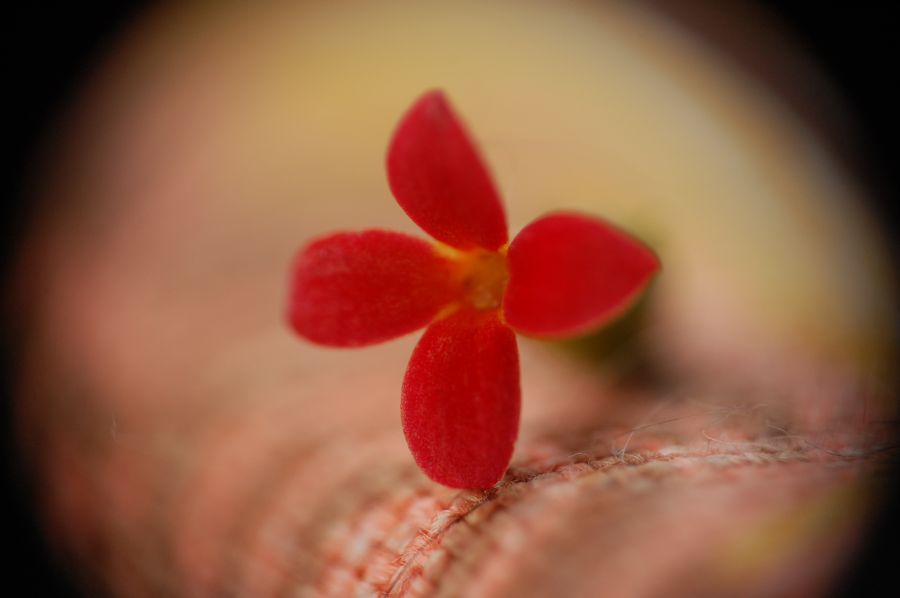
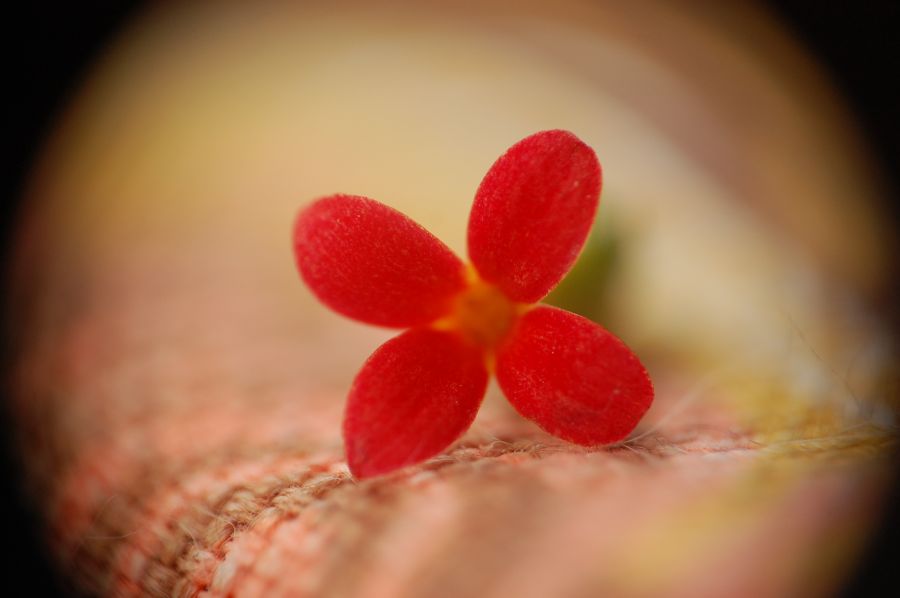
2. normal 18-55 mm kit lens set at 55mm =>f 5.6 and 28 mm f 2.8 Color Skoparex reversed, using 49-52 step-up and 52-52 mm coupler
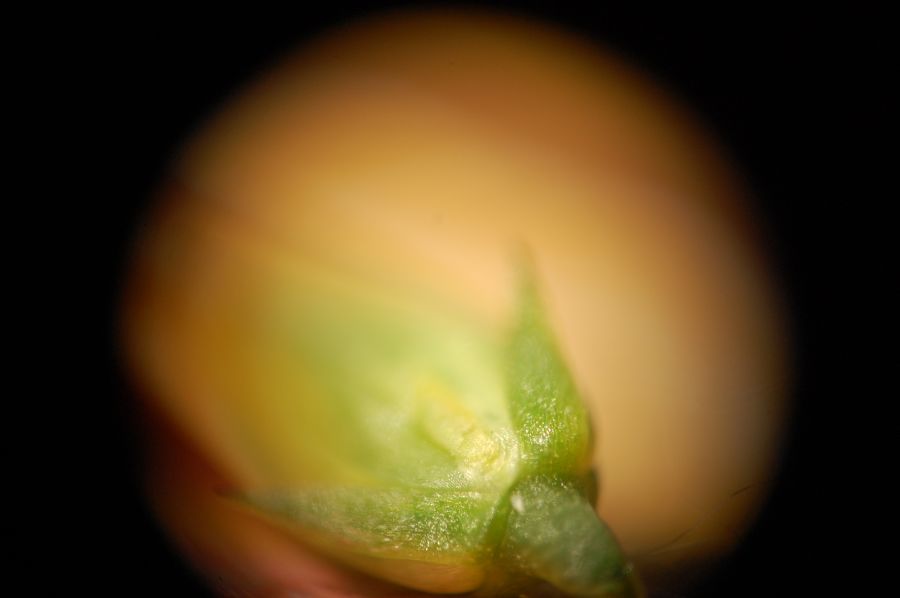
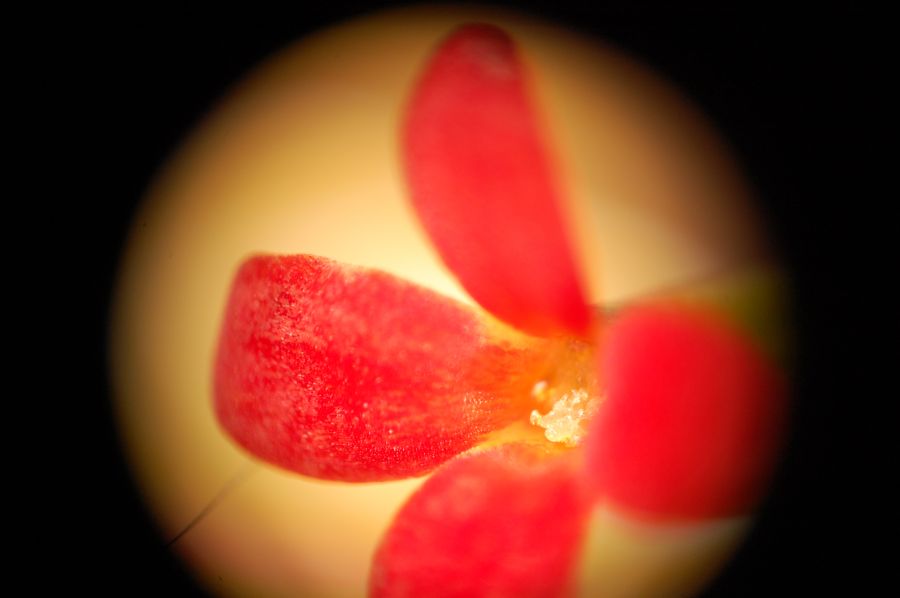
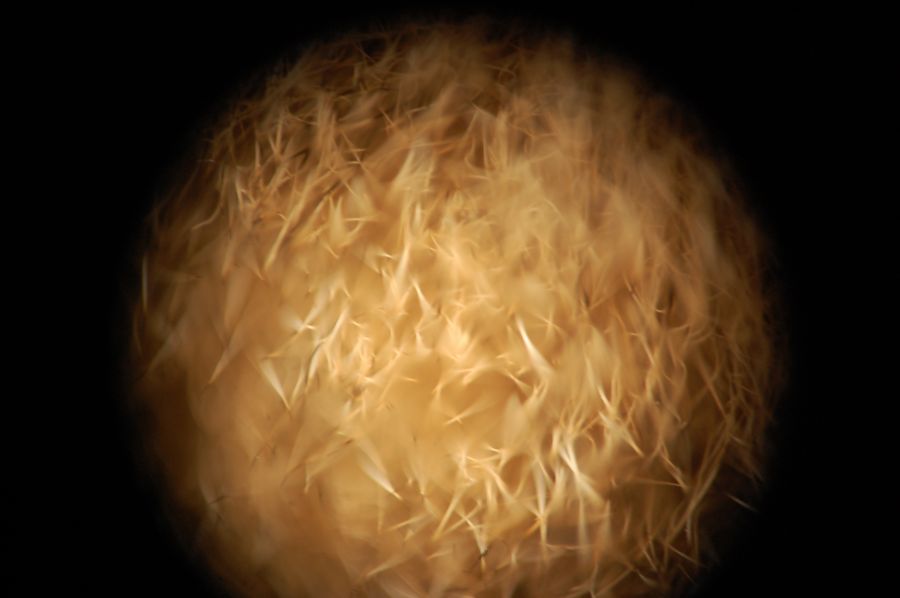
This last one is my cat's hair 
3. just the Color Ultron 50 mm f 1.8 reversed over D40, lens held by hand, shot using a tripod
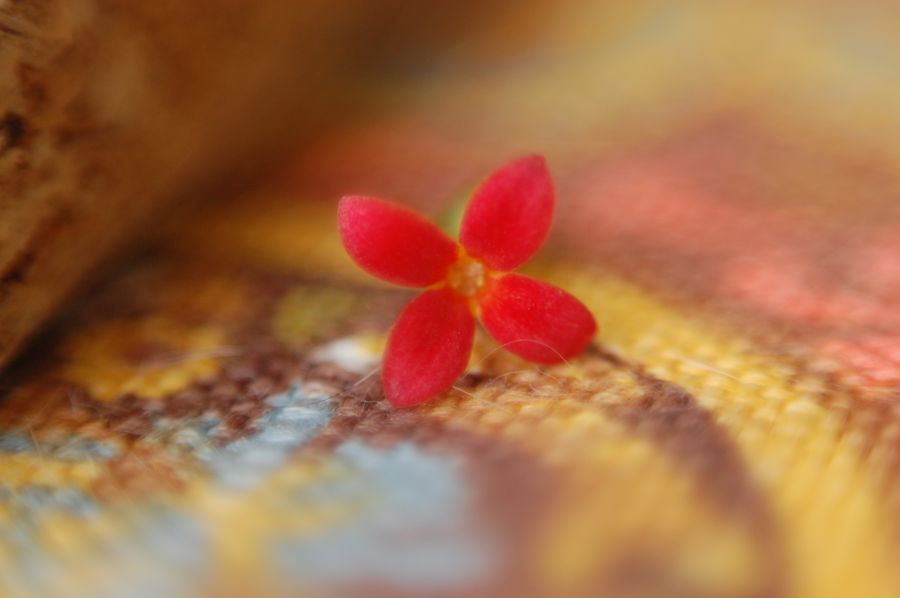
4. just the Color Skoparex 28 mm f2.8 reversed over D40, lens held by hand, shot without tripod

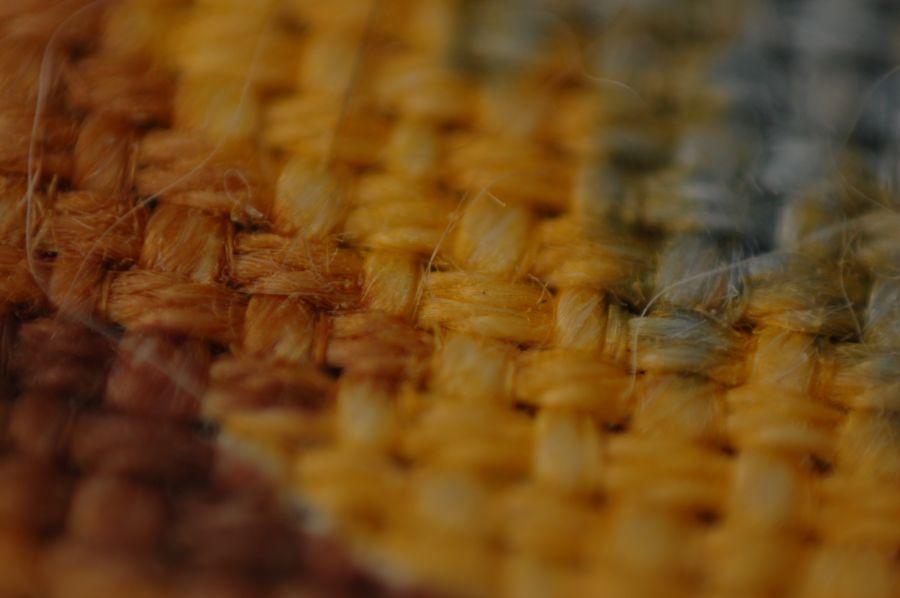
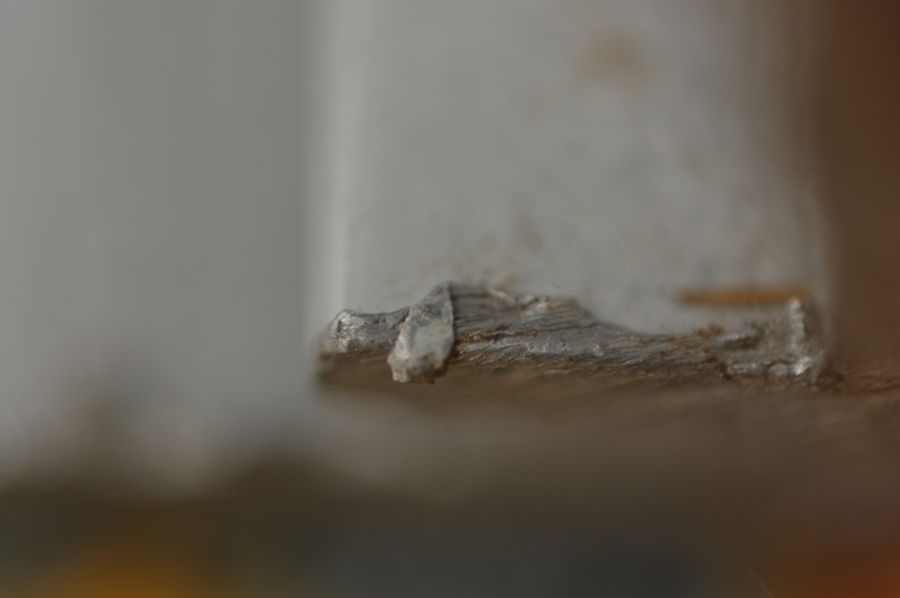
5. photos taken from the approximately same place with my kit lens at 55 mm
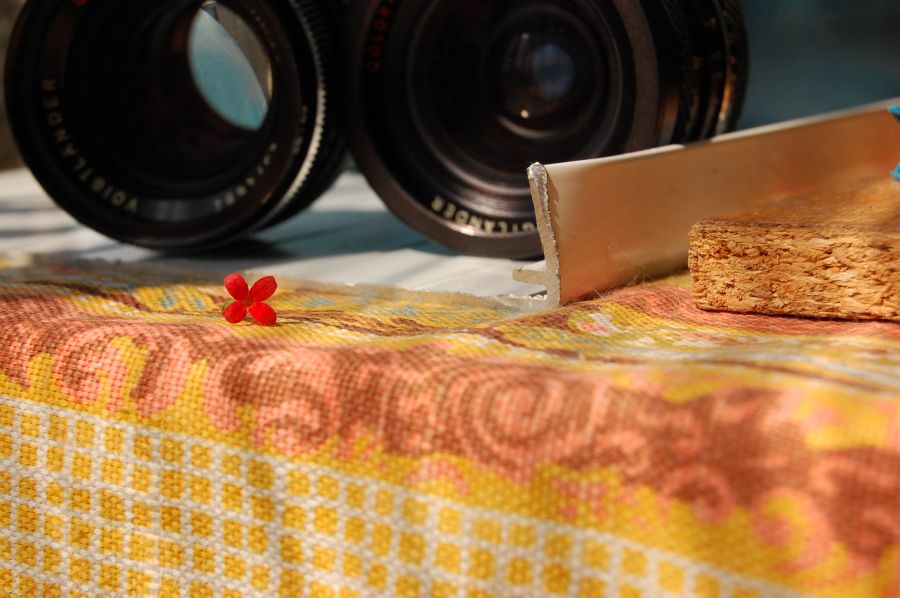
I must say in my defense that my tripod isn't the highest quality one and I kind of lacked space to move it, I was in the balcony (no flash used).
So, what do you think? Was it worth the few dollars spent? I'm thinking of buying a BR-2A ring to hold the reversed lenses into place and use them separately. Vignetting is pretty high... |
|
| Back to top |
|
 |
petermcwerner

Joined: 28 Sep 2009
Posts: 1
Location: Switzerland
|
 Posted: Mon Sep 28, 2009 8:44 am Post subject: Posted: Mon Sep 28, 2009 8:44 am Post subject: |
 |
|
petermcwerner wrote:
So, what do you think? Was it worth the few dollars spent? I'm thinking of buying a BR-2A ring to hold the reversed lenses into place and use them separately. Vignetting is pretty high...
I commend your efforts. The sharpness with your setup is not the best and the DOF minimal. If you have the possibility, I would recommend buying a not too expensive prime (fixed focus, not zoom) macro lens. A good buy is the 55mm micro nikkor, but there might be other types available.
The second alternative, less expensive, is to buy a macro extension tube (set) for your camera.
Finally, probably to least expensive is by putting a closeup macro filter (lens)
Cheers
Peter |
|
| Back to top |
|
 |
overmywaders

Joined: 27 May 2009
Posts: 49
|
 Posted: Sun Oct 04, 2009 1:45 am Post subject: Posted: Sun Oct 04, 2009 1:45 am Post subject: |
 |
|
overmywaders wrote:
You might also want to get the wireless remote for the D40 (see Click here to see on Ebay). I use one of these for UV shots which require long exposure times. If you have a less than solid tripod, this simple device will clean up your shots.
_________________
Lenses: Tokina Super-Lentar 35/2.8, Schneider-Kreuznach Jsogon 40/4.5, Ludwig Meritar 50/2.9, Ludwig Peconar 50/2.9, Leica Elmar 90/4, Steinheil Cassar 105/4.5, Steinheil Cintagon 100/3.5, Piesker Picon 135/3.5, Telisar 135/3/5, Accura Anastigmat 135/4.5, CZJ Triotar 135/4, Steinheil Culminar 135/4.5, Bausch & Lomb Tessar IIb 158/6.3, Piesker Tele-Picon 180/5.5, Piesker Picon 250/4.5, Piesker Tele-Picon 400/4.5 |
|
| Back to top |
|
 |
Minolfan


Joined: 30 Dec 2008
Posts: 3439
Location: Netherlands
|
 Posted: Sun Oct 04, 2009 5:05 pm Post subject: Posted: Sun Oct 04, 2009 5:05 pm Post subject: |
 |
|
Minolfan wrote:
The best way to use a reversed lens is not to stack it on your kitlens, but to use a reverser ring with Nikon mount, direct to the camera. If you have a reverser ring for M42 you can use a lensles M42> Nikon adapter to mount the reversed lens, but you can also screw cheap M42 extension ring bewtween for stronger enlargements. No problems with that vignetting. I don't know if Nikon extensionrings are cheaply to be get.
Another macro possibility might be using the lenses in normal direction, if you can make them fit in a plastic Nikon bodycap, with a hole in it. Not too difficult to drill that. Ofcourse you can make a bodycap fitting for M42 or the filtersize of your reverser ring too en make pictures without vignetting. It is some tinkering to go, but may be worth the troubles. |
|
| Back to top |
|
 |
patrickh


Joined: 23 Aug 2007
Posts: 8551
Location: Oregon
Expire: 2011-11-18
|
 Posted: Sun Oct 04, 2009 7:22 pm Post subject: Posted: Sun Oct 04, 2009 7:22 pm Post subject: |
 |
|
patrickh wrote:
Bellows? Extension rings? Focusing rail? Any of these will help and are relatively cheap. They will all help with that awful problem of obtaining focus with stability
patrickh
_________________
DSLR: Nikon D300 Nikon D200 Nex 5N
MF Zooms: Kiron 28-85/3.5, 28-105/3.2, 75-150/3.5, Nikkor 50-135/3.5 AIS // MF Primes: Nikkor 20/4 AI, 24/2 AI, 28/2 AI, 28/2.8 AIS, 28/3.5 AI, 35/1.4 AIS, 35/2 AIS, 35/2.8 PC, 45/2.8 P, 50/1.4 AIS, 50/1.8 AIS, 50/2 AI, 55/2.8 AIS micro, 55/3.5 AI micro, 85/2 AI, 100/2,8 E, 105/1,8 AIS, 105/2,5 AIS, 135/2 AIS, 135/2.8 AIS, 200/4 AI, 200/4 AIS micro, 300/4.5 AI, 300/4.5 AI ED, Arsat 50/1.4, Kiron 28/2, Vivitar 28/2.5, Panagor 135/2.8, Tamron 28/2.5, Tamron 90/2.5 macro, Vivitar 90/2.5 macro (Tokina) Voigtlander 90/3.5 Vivitar 105/2.5 macro (Kiron) Kaleinar 100/2.8 AI Tamron 135/2.5, Vivitar 135/2.8CF, 200/3.5, Tokina 400/5,6
M42: Vivitar 28/2.5, Tamron 28/2.5, Formula5 28/2.8, Mamiya 28/2.8, Pentacon 29/2.8, Flektogon 35/2.4, Flektogon 35/2.8, Takumar 35/3.5, Curtagon 35/4, Takumar 50/1.4, Volna-6 50/2.8 macro, Mamiya 50/1.4, CZJ Pancolar 50/1,8, Oreston 50/1.8, Takumar 50/2, Industar 50/3.5, Sears 55/1.4, Helios 58/2, Jupiter 85/2, Helios 85/1.5, Takumar 105/2.8, Steinheil macro 105/4.5, Tamron 135/2.5, Jupiter 135/4, CZ 135/4, Steinheil Culminar 135/4,5, Jupiter 135/3.5, Takumar 135/3.5, Tair 135/2.8, Pentacon 135/2.8, CZ 135/2.8, Taika 135/3.5, Takumar 150/4, Jupiter 200/4, Takumar 200/4
Exakta: Topcon 100/2.8(M42), 35/2.8, 58/1.8, 135/2.8, 135/2.8 (M42), Kyoei Acall 135/3.5
C/Y: Yashica 28/2.8, 50/1.7, 135/2.8, Zeiss Planar 50/1.4, Distagon 25/2.8
Hexanon: 28/3.5, 35/2.8, 40/1.8, 50/1.7, 52/1.8, 135/3.2, 135/3.5, 35-70/3.5, 200/3.5
P6 : Mir 38 65/3.5, Biometar 80/2.8, Kaleinar 150/2.8, Sonnar 180/2.8
Minolta SR: 28/2.8, 28/3.5, 35/2.8, 45/2, 50/2, 58/1.4, 50/1.7, 135/2.8, 200/3.5
RF: Industar 53/2.8, Jupiter 8 50/2
Enlarg: Rodagon 50/5,6, 80/5,6, 105/5.6, Vario 44-52/4, 150/5.6 180/5.6 El Nikkor 50/2,8,63/2.8,75/4, 80/5,6, 105/5.6, 135/5.6 Schneider 60/5.6, 80/5.6, 80/4S,100/5.6S,105/5.6,135/5.6, 135/5.6S, 150/5.6S, Leica 95/4 |
|
| Back to top |
|
 |
Helios

Joined: 05 Jan 2008
Posts: 537
Location: East of France
|
 Posted: Sun Nov 22, 2009 5:55 pm Post subject: Posted: Sun Nov 22, 2009 5:55 pm Post subject: |
 |
|
Helios wrote:
Bellows + enlarger lens or any lens in M39/M42 of Tessar formula relevant + adapter will give you good results for a reasonable amount (saying $50-70, second hand bellows and enlarger lens)  |
|
| Back to top |
|
 |
seuret

Joined: 29 Nov 2009
Posts: 34
Location: Bulgaria
|
 Posted: Sun Nov 29, 2009 1:38 pm Post subject: Posted: Sun Nov 29, 2009 1:38 pm Post subject: |
 |
|
seuret wrote:
Hello from Bulgaria 
I have similar "problems". I use my pentacons(50/1.8 and 135/2. with my m42 macro rings and Nikon-M42 converter. I have used all of the rigns together and each one separately. It depends of the object. One of the problems for me is that the converter has a back lens which decrease the image quality, but i'll buy one without back lens beacuse i don't need an infinity focus when taking macro photos. with my m42 macro rings and Nikon-M42 converter. I have used all of the rigns together and each one separately. It depends of the object. One of the problems for me is that the converter has a back lens which decrease the image quality, but i'll buy one without back lens beacuse i don't need an infinity focus when taking macro photos.
If i forget about the back lens the results are very good, i have very close up photos and with an additional rings(the original kit is with 3 rings but sometimes i use 2 kits) the focal lenght is extremely short.
If you have sime m42 lenses you try this "system". It's not perfect, but it is probably the cheapest and results aren't so bad.
_________________
SLR Cameras:Zenit 122, Praktica MTL5B, Nikon D90, Nikon F90x
RF Cameras: Siluet Elektro
MF Lenses: Helios 44-6 58/2; Pentacon 50/1.8 Electric; Pentacon 135/2.8 Auto; Jupiter 9 85/2; Tamron Adaptall 135/2.8
AF Lenses: Nikon 17-55/2.8 DX; Nikon 70-300 VR; Nikon 50/1.8 D; Nikon 18-70DX; Sigma 24/2.8 |
|
| Back to top |
|
 |
larsr


Joined: 25 Jun 2009
Posts: 272
Location: Helsinki, Finland
|
 Posted: Thu Dec 03, 2009 1:34 pm Post subject: Posted: Thu Dec 03, 2009 1:34 pm Post subject: |
 |
|
larsr wrote:
| seuret wrote: |
One of the problems for me is that the converter has a back lens which decrease the image quality,
|
You should do a search on this forum for the relation of IQ and these M42->Nikon F adapters. It simply is not absolutely true that an optical adapter decreases IQ, at least not to the extent that your images would be unusable. It all depends on the optical adapter used.
_________________
Lars
Bodies:
DSLR: Nikon D200
SLR: Nikon FA, Pentax Spotmatic SPII, Zeiss Ikon Icarex 35TM
35mm: Voigtl�nder Vitoret
Nikkor MF
24/2.8K AI'd, 28/2.8 AIS, 35/2 AIS, 50/1.4 AIS, 50/1.8 AIS, 50/2 AI, 55/2.8 Micro, 35-70/3.5 AIS, 85/1.8K AI'd, 100/2.8 Series E, 105/2.5 AI, 105/2.5 AIS, 135/3.5 AI, Nikkor 180/2.8 ED AIS, 200/4-Q AI'd, 300/4.5-H AI'd
M42
Misc: Vivitar 28/2.5, Chinon 28/2.8, Cosina Auto Cosinon 50/1.8, Revue Auto Revuenon 50/1.8, Mamiya 50/2, Auto Flex 55/1.7, Cosina Cosinon 135/2.8 MC, Vivitar 135/2.8, Petri 200/3.5 CC Auto
Zeiss: Carl Zeiss (Ikon) Tessar 50/2.8, CZJ Tessar 50/2.8, CZJ Pancolar Electric 50/1.8 MC, CZJ Biotar 58/2 T, CZJ Sonnar MC S 135/3.5
Asahi-Pentax: SMC-Takumar 55/1.8, Super-Takumar 105/2.8, SMC-Takumar 135/3.5
USSR: Mir-1 37/2.8 (1958 GP), Helios 44-2 58/2
Pentacon/Meyer: Pentacon 29/2.8 MC, Pentacon 50/1.8 MC Electric, Meyer G�rlitz Oreston 50/1.8, Meyer G�rlitz Orestor 135/2.8, Pentacon 200/4
Nikkor AF
50/1.8 D, 60/2.8 Micro, 55-200/4-5.6 G VR, 70-300/4-5.6 ED, 18-70/3.5-4.5 G
Wantlist
Nikkor 105/1.8, Nikkor 135/2
|
|
| Back to top |
|
 |
Esox lucius


Joined: 26 Aug 2008
Posts: 2441
Location: Helsinki, Finland
Expire: 2011-11-18
|
 Posted: Thu Dec 03, 2009 8:04 pm Post subject: Posted: Thu Dec 03, 2009 8:04 pm Post subject: |
 |
|
Esox lucius wrote:
| seuret wrote: |
| One of the problems for me is that the converter has a back lens which decrease the image quality |
The general Internet opinion is that it is acceptable to use €€ filters in front of €€€€ lenses but unacceptable loss of quality to couple €€ lenses with an optical adapter.

This is M42 CZJ Tessar 50/2.8 T with glass adapter on Nikon (D3). Click the link, take a look at this original size... then ask yourself; do you intend to shoot test charts or take photos for the pleasure of yourself and others?
http://www.flickr.com/photos/mureena/3389977219/sizes/o/
_________________
Vilhelm
Nikon DSLR: D4, D800, Nikon D3, D70
Nikon SLR: Nikon F100, Nikon FM2n
Nikkor MF: 20/2.8 Ai-S, 24/2 Ai-S, 24/2.8 Ai-S, 28/2 Ai-S, 28/2.8 Ai-S, 35/1.4 AIS, 35/2 Ai-S, 45/2.8 GN, 50/1.2 Ai, 50/1.2 Ai-S, 50/1.4 Ai, 50/1.4 Ai-S, 50/1.8 AI-S "long", 50/1.8 AI-S "short", 55/1.2 Ai, 85/1.4 Ai-S, 85/1.8H, 105/2.5 Ai, 135/2.8Q, 135/3.5 Ai, 180/2.8 Ai-S ED
Nikkor AF/AF-S FX: 14-24/2.8G, 16/2.8D Fisheye, 16-35/4G VR, 17-35/2.8D, 24/1.4G, 24/3.5D PC-E, 24/2.8D, 24-70/2.8G, 28/1.4D, 28/1.8G, 35/1.4G, 35/2D, 50/1.4D, 50/1.4G, 50/1.8G, 60/2.8 Micro, 60/2.8G Micro, 70-200/2.8G VR, 70-200/2.8G VR II, 80-400/4.5-5.6D VR, 85/1.4G, 85/2.8D PC-E Micro, 105/2D DC, 105/2.8G VR Micro, 135/2D DC, 200/2G VR, 200-400/4G VR, 300/2.8G VR, 300/4D ED, 400/2.8G VR, 800/5.6E VR
Nikkor AF/AF-S DX: 10.5/2.8G Fisheye, 12-24/4G, 18-70/3.5-4.5G
Topcor: Auto-Topcor 58/1.4,
Voigtländer SL: 40/2 Ultron, 58/1.4 Nokton, 75/2.5 Color-Heliar, 90/3.5 APO-Lanthar, 125/2.5 APO-Lanthar, 180/4 APO-Lanthar
Zeiss ZF: Planar T* 85/1.4 ZF
M42 SLR: Voigtländer Bessaflex TM
M42: Flektogon 20/4, Flektogon 35/2.4, Tessar 50/2.8 T, Super-Takumar 55/1.8, Biotar 58/2 T, Pentacon 135/2.8, Sonnar 135/3.5
Medium format: several Zeiss Super Ikonta 532/16 Opton-Tessar 80mm f/2.8, Zeiss Ikonta 524/16 Opton-Tessar 75mm f/3.5
Leica: R7, M4, Super-Angulon-R 4/21, Elmarit-R 2.8/28, Summicron-R 2/35, Summicron-M 2/35, Summicron-M 2/50, Elmarit-R 2,8/180 |
|
| Back to top |
|
 |
Orio

Joined: 24 Feb 2007
Posts: 29545
Location: West Emilia
Expire: 2012-12-04
|
 Posted: Thu Dec 03, 2009 8:41 pm Post subject: Posted: Thu Dec 03, 2009 8:41 pm Post subject: |
 |
|
Orio wrote:
| Esox lucius wrote: |
The general Internet opinion is that it is acceptable to use €€ filters in front of €€€€ lenses but unacceptable loss of quality to couple €€ lenses with an optical adapter.
|
I never use UV filters, however the two things that you mention are not comparable. An optical adapter features an optical element that becomes part of the optical scheme, altering it.
By refocusing the image, the optical element can and often does introduce optical problems much worse than even a dirty UV filter can cause.
_________________
Orio, Administrator
T*
NE CEDE MALIS AUDENTIOR ITO
Ferrania film is reborn! http://www.filmferrania.it/
Support the Ornano film chemicals company and help them survive!
http://forum.mflenses.com/ornano-chemical-products-t55525.html |
|
| Back to top |
|
 |
Esox lucius


Joined: 26 Aug 2008
Posts: 2441
Location: Helsinki, Finland
Expire: 2011-11-18
|
 Posted: Thu Dec 03, 2009 9:06 pm Post subject: Posted: Thu Dec 03, 2009 9:06 pm Post subject: |
 |
|
Esox lucius wrote:
I agree: There is degradation of image quality both with optical adapters as well as optical filters in front of the lens. Whether or not this mathematically unquestionable loss of image detail has practical implementations remains to argue.
Even if you are pixel-peeping 100% crops it will require a very skilled eye to see the difference. Most noticeable implication is not loss of detail, but the fact that an M42 to Nikon mount optical adapter will have the effect of a teleconverter.
I have made 60x90cm prints out of 1.4x teleconverter photos, and I find the loss of quality acceptable. I have made 60x90cm prints of photos taken with Nikon D3 and M42 lenses using an 1.2x optical magnifying adapter, and I find the loss of quality acceptable. Practical implications? Minimal to none, because in 98% of cases it's only the artist who'll be able to spot which brush he/she used to create it.
_________________
Vilhelm
Nikon DSLR: D4, D800, Nikon D3, D70
Nikon SLR: Nikon F100, Nikon FM2n
Nikkor MF: 20/2.8 Ai-S, 24/2 Ai-S, 24/2.8 Ai-S, 28/2 Ai-S, 28/2.8 Ai-S, 35/1.4 AIS, 35/2 Ai-S, 45/2.8 GN, 50/1.2 Ai, 50/1.2 Ai-S, 50/1.4 Ai, 50/1.4 Ai-S, 50/1.8 AI-S "long", 50/1.8 AI-S "short", 55/1.2 Ai, 85/1.4 Ai-S, 85/1.8H, 105/2.5 Ai, 135/2.8Q, 135/3.5 Ai, 180/2.8 Ai-S ED
Nikkor AF/AF-S FX: 14-24/2.8G, 16/2.8D Fisheye, 16-35/4G VR, 17-35/2.8D, 24/1.4G, 24/3.5D PC-E, 24/2.8D, 24-70/2.8G, 28/1.4D, 28/1.8G, 35/1.4G, 35/2D, 50/1.4D, 50/1.4G, 50/1.8G, 60/2.8 Micro, 60/2.8G Micro, 70-200/2.8G VR, 70-200/2.8G VR II, 80-400/4.5-5.6D VR, 85/1.4G, 85/2.8D PC-E Micro, 105/2D DC, 105/2.8G VR Micro, 135/2D DC, 200/2G VR, 200-400/4G VR, 300/2.8G VR, 300/4D ED, 400/2.8G VR, 800/5.6E VR
Nikkor AF/AF-S DX: 10.5/2.8G Fisheye, 12-24/4G, 18-70/3.5-4.5G
Topcor: Auto-Topcor 58/1.4,
Voigtländer SL: 40/2 Ultron, 58/1.4 Nokton, 75/2.5 Color-Heliar, 90/3.5 APO-Lanthar, 125/2.5 APO-Lanthar, 180/4 APO-Lanthar
Zeiss ZF: Planar T* 85/1.4 ZF
M42 SLR: Voigtländer Bessaflex TM
M42: Flektogon 20/4, Flektogon 35/2.4, Tessar 50/2.8 T, Super-Takumar 55/1.8, Biotar 58/2 T, Pentacon 135/2.8, Sonnar 135/3.5
Medium format: several Zeiss Super Ikonta 532/16 Opton-Tessar 80mm f/2.8, Zeiss Ikonta 524/16 Opton-Tessar 75mm f/3.5
Leica: R7, M4, Super-Angulon-R 4/21, Elmarit-R 2.8/28, Summicron-R 2/35, Summicron-M 2/35, Summicron-M 2/50, Elmarit-R 2,8/180 |
|
| Back to top |
|
 |
seuret

Joined: 29 Nov 2009
Posts: 34
Location: Bulgaria
|
 Posted: Thu Dec 03, 2009 10:38 pm Post subject: Posted: Thu Dec 03, 2009 10:38 pm Post subject: |
 |
|
seuret wrote:
| larsr wrote: |
| seuret wrote: |
One of the problems for me is that the converter has a back lens which decrease the image quality,
|
You should do a search on this forum for the relation of IQ and these M42->Nikon F adapters. It simply is not absolutely true that an optical adapter decreases IQ, at least not to the extent that your images would be unusable. It all depends on the optical adapter used. |
Ih, i'm sorry for the misunderstanding. There is (by my opinion and in my particular case) decreased IQ, but the images are usable and i'm using them. I just wanted to mention that it's not a perfect system, but it's the cheapest(probably). Anyway you can get a non-optical M42-Nikon adapter because in macro photos you don't need infinity. So, there won't be any(if on theory) IQ decrease.
_________________
SLR Cameras:Zenit 122, Praktica MTL5B, Nikon D90, Nikon F90x
RF Cameras: Siluet Elektro
MF Lenses: Helios 44-6 58/2; Pentacon 50/1.8 Electric; Pentacon 135/2.8 Auto; Jupiter 9 85/2; Tamron Adaptall 135/2.8
AF Lenses: Nikon 17-55/2.8 DX; Nikon 70-300 VR; Nikon 50/1.8 D; Nikon 18-70DX; Sigma 24/2.8 |
|
| Back to top |
|
 |
seuret

Joined: 29 Nov 2009
Posts: 34
Location: Bulgaria
|
 Posted: Thu Dec 03, 2009 10:41 pm Post subject: Posted: Thu Dec 03, 2009 10:41 pm Post subject: |
 |
|
seuret wrote:
| Esox lucius wrote: |
| seuret wrote: |
| One of the problems for me is that the converter has a back lens which decrease the image quality |
The general Internet opinion is that it is acceptable to use €€ filters in front of €€€€ lenses but unacceptable loss of quality to couple €€ lenses with an optical adapter.
Well,what's your point?
This is M42 CZJ Tessar 50/2.8 T with glass adapter on Nikon (D3). Click the link, take a look at this original size... then ask yourself; do you intend to shoot test charts or take photos for the pleasure of yourself and others?
http://www.flickr.com/photos/mureena/3389977219/sizes/o/ |
_________________
SLR Cameras:Zenit 122, Praktica MTL5B, Nikon D90, Nikon F90x
RF Cameras: Siluet Elektro
MF Lenses: Helios 44-6 58/2; Pentacon 50/1.8 Electric; Pentacon 135/2.8 Auto; Jupiter 9 85/2; Tamron Adaptall 135/2.8
AF Lenses: Nikon 17-55/2.8 DX; Nikon 70-300 VR; Nikon 50/1.8 D; Nikon 18-70DX; Sigma 24/2.8 |
|
| Back to top |
|
 |
overmywaders

Joined: 27 May 2009
Posts: 49
|
 Posted: Thu Dec 03, 2009 11:30 pm Post subject: Posted: Thu Dec 03, 2009 11:30 pm Post subject: |
 |
|
overmywaders wrote:
OTOH, you can always butcher your Nikon as I did and use M42s (and Exaktas fitted as M42s) with infinity. I haven't yet tried to reverse the mods instead I just got rid of my few F-mount lenses - for my purposes they weren't as useful as the older glass anyway (UV). I converted even the Steinheil and Argus Cintagons to M42 mount, but, as someone here had warned me, I'm mms away from infinity. Good macro glass, though.
_________________
Lenses: Tokina Super-Lentar 35/2.8, Schneider-Kreuznach Jsogon 40/4.5, Ludwig Meritar 50/2.9, Ludwig Peconar 50/2.9, Leica Elmar 90/4, Steinheil Cassar 105/4.5, Steinheil Cintagon 100/3.5, Piesker Picon 135/3.5, Telisar 135/3/5, Accura Anastigmat 135/4.5, CZJ Triotar 135/4, Steinheil Culminar 135/4.5, Bausch & Lomb Tessar IIb 158/6.3, Piesker Tele-Picon 180/5.5, Piesker Picon 250/4.5, Piesker Tele-Picon 400/4.5 |
|
| Back to top |
|
 |
Orio

Joined: 24 Feb 2007
Posts: 29545
Location: West Emilia
Expire: 2012-12-04
|
 Posted: Thu Dec 03, 2009 11:37 pm Post subject: Posted: Thu Dec 03, 2009 11:37 pm Post subject: |
 |
|
Orio wrote:
| Esox lucius wrote: |
| I agree: There is degradation of image quality both with optical adapters as well as optical filters in front of the lens. |
Well, you don't really agree if you say so  because I think that while filters can (not always) produce a slight loss of contrast, the damage of an optical converter is of a different nature - usually noticeable as corner problems, sometimes also as CA problem. because I think that while filters can (not always) produce a slight loss of contrast, the damage of an optical converter is of a different nature - usually noticeable as corner problems, sometimes also as CA problem.
| Esox lucius wrote: |
| Whether or not this mathematically unquestionable loss of image detail has practical implementations remains to argue. |
I have used an optical adapter from M42 to Nikon and believe me, you could see it easily if you looked at the corners. Of course more visible on full frame camera than on APS-C camera.
_________________
Orio, Administrator
T*
NE CEDE MALIS AUDENTIOR ITO
Ferrania film is reborn! http://www.filmferrania.it/
Support the Ornano film chemicals company and help them survive!
http://forum.mflenses.com/ornano-chemical-products-t55525.html |
|
| Back to top |
|
 |
Esox lucius


Joined: 26 Aug 2008
Posts: 2441
Location: Helsinki, Finland
Expire: 2011-11-18
|
 Posted: Fri Dec 04, 2009 10:55 am Post subject: Posted: Fri Dec 04, 2009 10:55 am Post subject: |
 |
|
Esox lucius wrote:
| seuret wrote: |
| Well,what's your point? |
What one photographer finds unacceptable another viewer would not even notice.
Last summer, I sold a 60x90cm print to a client who clearly was serious about photography gear. The client, when seeing my 70-200/2.8G Nikkor lens, delivered me a rant about how crap that lens is on full-frame: weak detail at 180-200mm, vignetting wide open, doesn't handle a teleconverter without severe loss of detail etc. etc. Once done with the rant, client bought the photo and paid €€€. I never told buyer that the photo sold was taken with a full-frame Nikon D3 and the very same "crap" lens, at 200mm near infinity, wide open (f/4) using a 1.4x teleconverter. I know for fact the photo adorns the client's wall still today.
Critics talk about art, artists talk about brushes.
Very true, most of us photographers will see how M42 glass with optical adapters results (especially with wide-angles) in aberrations and loss of corner detail. I just find it interesting when these M42 lenses are subjected to technical quality demands most of them, objectively speaking, cannot pass even on register-compatible Canon DSLRs using mechanical adapters.
Let people themselves judge results and themselves decide what is acceptable quality and what not. Don't decide on their behalf - it's their money not yours.
_________________
Vilhelm
Nikon DSLR: D4, D800, Nikon D3, D70
Nikon SLR: Nikon F100, Nikon FM2n
Nikkor MF: 20/2.8 Ai-S, 24/2 Ai-S, 24/2.8 Ai-S, 28/2 Ai-S, 28/2.8 Ai-S, 35/1.4 AIS, 35/2 Ai-S, 45/2.8 GN, 50/1.2 Ai, 50/1.2 Ai-S, 50/1.4 Ai, 50/1.4 Ai-S, 50/1.8 AI-S "long", 50/1.8 AI-S "short", 55/1.2 Ai, 85/1.4 Ai-S, 85/1.8H, 105/2.5 Ai, 135/2.8Q, 135/3.5 Ai, 180/2.8 Ai-S ED
Nikkor AF/AF-S FX: 14-24/2.8G, 16/2.8D Fisheye, 16-35/4G VR, 17-35/2.8D, 24/1.4G, 24/3.5D PC-E, 24/2.8D, 24-70/2.8G, 28/1.4D, 28/1.8G, 35/1.4G, 35/2D, 50/1.4D, 50/1.4G, 50/1.8G, 60/2.8 Micro, 60/2.8G Micro, 70-200/2.8G VR, 70-200/2.8G VR II, 80-400/4.5-5.6D VR, 85/1.4G, 85/2.8D PC-E Micro, 105/2D DC, 105/2.8G VR Micro, 135/2D DC, 200/2G VR, 200-400/4G VR, 300/2.8G VR, 300/4D ED, 400/2.8G VR, 800/5.6E VR
Nikkor AF/AF-S DX: 10.5/2.8G Fisheye, 12-24/4G, 18-70/3.5-4.5G
Topcor: Auto-Topcor 58/1.4,
Voigtländer SL: 40/2 Ultron, 58/1.4 Nokton, 75/2.5 Color-Heliar, 90/3.5 APO-Lanthar, 125/2.5 APO-Lanthar, 180/4 APO-Lanthar
Zeiss ZF: Planar T* 85/1.4 ZF
M42 SLR: Voigtländer Bessaflex TM
M42: Flektogon 20/4, Flektogon 35/2.4, Tessar 50/2.8 T, Super-Takumar 55/1.8, Biotar 58/2 T, Pentacon 135/2.8, Sonnar 135/3.5
Medium format: several Zeiss Super Ikonta 532/16 Opton-Tessar 80mm f/2.8, Zeiss Ikonta 524/16 Opton-Tessar 75mm f/3.5
Leica: R7, M4, Super-Angulon-R 4/21, Elmarit-R 2.8/28, Summicron-R 2/35, Summicron-M 2/35, Summicron-M 2/50, Elmarit-R 2,8/180
Last edited by Esox lucius on Fri Dec 04, 2009 2:21 pm; edited 3 times in total |
|
| Back to top |
|
 |
ChrisLilley


Joined: 01 Jan 2008
Posts: 1767
Location: Nice, France
|
 Posted: Fri Dec 04, 2009 1:30 pm Post subject: Posted: Fri Dec 04, 2009 1:30 pm Post subject: |
 |
|
ChrisLilley wrote:
| Orio wrote: |
| Esox lucius wrote: |
The general Internet opinion is that it is acceptable to use €€ filters in front of €€€€ lenses but unacceptable loss of quality to couple €€ lenses with an optical adapter.
|
I never use UV filters, however the two things that you mention are not comparable. An optical adapter features an optical element that becomes part of the optical scheme, altering it. |
A UV filter is also an optical element and becomes part of the optical scheme, altering it.
Less so if the glass used has good transmission characteristics and has been precision ground to perfect flatness on both sides, then multicoated.
More so if its some cheap bit of poured glass that is "sort of flat'.
_________________
Camera (ˈkæ mə rə), n. Device for taking pictures in bright light
There are 10 kinds of people in the world: those who understand binary, and those who don’t. Key: Ai-P, Ai, Ai'ed, AiS
Camera: Nikon D90, D40, DK-21M eyepiece, ML-3 remote MF lenses: Nikkor 20mm f/4 K, AI'ed | N.K. Nikkor-N 24mm f/2.8 | Nikkor-N.C 24mm f/2.8 | Nikkor 28mm f/2.8 AiS late model | Арсенал (Arsenal) Мир-24Н (Mir-24N) 35mm f/2 | Cosina Voigtländer Ultron SL II 40mm f/2.0 | Micro-Nikkor 55mm f/2.8 AiS | Zoom-Nikkor 80-200 f/4.5 Ai | ЛЗОС (LZOS) Юпитер-9 (Jupiter-9) 85mm f/2 | Cosina Voigtländer APO-Lanthar 90mm f/3.5 SL | Nikkor-P 105mm f/2.5 pre-Ai, Ai'ed | Micro-Nikkor 105mm f/4 | Schneider Kreuznach Componon 105mm f/5.6 | Nikkor 135mm f/2.8, Ai'ed 1976 model | Nikkor 180mm f/2.8 ED AiS | Арсенал (Arsenal) ТЕЛЕАР-Н (Telear-n) 200mm f/3.5 | Nikkor 300 mm f/4.5 Ai (full equipment list) |
|
| Back to top |
|
 |
Orio

Joined: 24 Feb 2007
Posts: 29545
Location: West Emilia
Expire: 2012-12-04
|
 Posted: Fri Dec 04, 2009 3:27 pm Post subject: Posted: Fri Dec 04, 2009 3:27 pm Post subject: |
 |
|
Orio wrote:
| ChrisLilley wrote: |
A UV filter is also an optical element and becomes part of the optical scheme, altering it.
Less so if the glass used has good transmission characteristics and has been precision ground to perfect flatness on both sides, then multicoated.
More so if its some cheap bit of poured glass that is "sort of flat'. |
I don't think that UV filters that are properly made, are supposed to deviate the direction of the light rays, which is what optical adapters obviously do, since their purpose is to refocus them.
Of course I am no technician and don't pretend to be one, but simple logic tells me that there is a difference.
On a more general level, I always thought that optical adapters do not have a real justification to exist today, when most lenses are available used for little or reasonable money.
In the past, before digital and autofocus, optical adapters were for many the only possibility to use certain types of lenses (such as super wides) without spending a fortune; the most typical case here in Italy was Nikon users who resorted to use Flektogon or MIR wide angles with optical adapter, because they could be purchased at second hand markets for little money, while Nikon lenses, even used, were a lot more costly.
But today, after autofocus and digital, a lot of the older Nikon lenses are available for the same used price of Flektogons. Sometimes even for less. So the thing makes a lot less sense to me. Because it is obvious, that any Nikkor superwide (just an example, the 3.5/20, which I used to own) will perform better, on a Nikon camera, then a Flektogon 20 with optical adapter. And the cost of the two used lenses is the same, if not even more favorable for the Nikkor today.
So where is the point in using optical adapters, at all?
I have read a lot of talk on the subject in the last couple of years, but I still have to read a good answer to this question.
_________________
Orio, Administrator
T*
NE CEDE MALIS AUDENTIOR ITO
Ferrania film is reborn! http://www.filmferrania.it/
Support the Ornano film chemicals company and help them survive!
http://forum.mflenses.com/ornano-chemical-products-t55525.html |
|
| Back to top |
|
 |
Orio

Joined: 24 Feb 2007
Posts: 29545
Location: West Emilia
Expire: 2012-12-04
|
 Posted: Fri Dec 04, 2009 4:03 pm Post subject: Posted: Fri Dec 04, 2009 4:03 pm Post subject: |
 |
|
Orio wrote:
| Esox lucius wrote: |
Even if you are pixel-peeping 100% crops it will require a very skilled eye to see the difference. |
Well, I have looked at your photo sample:
http://www.flickr.com/photos/mureena/3389977219/sizes/o/
and I think that it would take a blind man not to see the coma aberrations in the lower corners of the image. The word "corners" used quite largely, because the coma begins to be perceptible already from the bottom of the tower structure, which is far from the real corner.
For me, this result is very poor, and definitely not acceptable. You would obtain a way lot better result even using a cheap third party nikon compatible lens such as an Arsat 50mm.
_________________
Orio, Administrator
T*
NE CEDE MALIS AUDENTIOR ITO
Ferrania film is reborn! http://www.filmferrania.it/
Support the Ornano film chemicals company and help them survive!
http://forum.mflenses.com/ornano-chemical-products-t55525.html |
|
| Back to top |
|
 |
|
|
